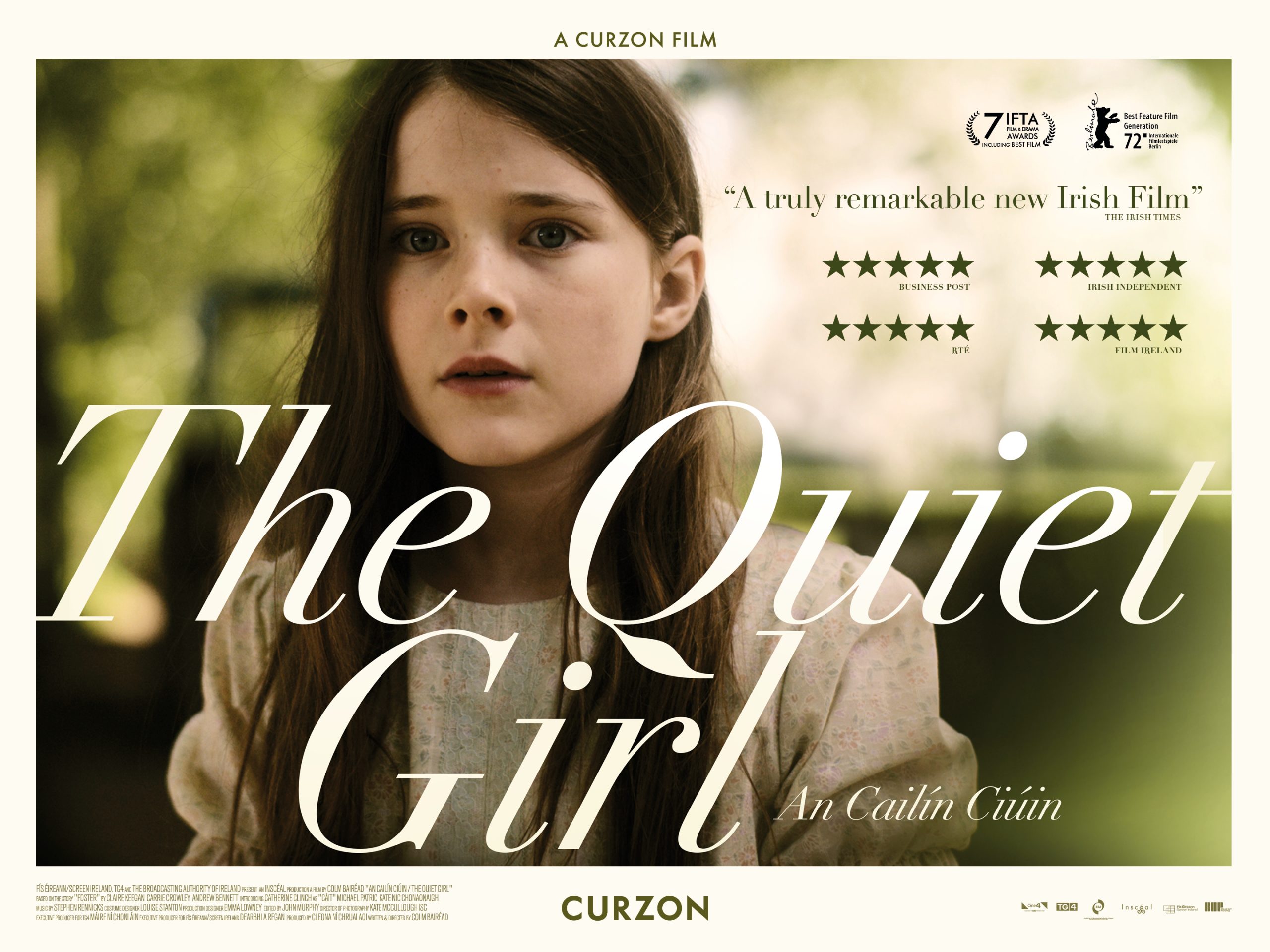If ever there was a motion picture to portray fostering so beautifully, An Cailín Ciúin (The Quiet Girl) would be it. Released this year in May, it has become one of the most praised films of its kind, screening in major Irish cinemas, receiving 11 nominations at the 18th Irish Film and Television awards and winning 7 of those nominations. The production itself is short and sweet. Simple but powerful, realistic but romantic. The Quiet Girl offers a glimpse into two very different families living in the Irish countryside in 1981. It felt like a love letter to rural Irish farm life.
Keegan’s meticulous way of exposing emotion and brilliant character building is honoured in the film adaptation by director Colm Bairéad and producer Cleona Ní Chrualaoi.
Based on Claire Keegan’s novella Foster, published in 2010, the film featured a lot of what Keegan included in her original story. It captured its sense of awe with Irish culture and cautiously built figures. It won the 2009 Davy Byrnes Short Story Award judged by Richard Ford, and was later published by Faber and abridged for The New Yorker. Keegan’s meticulous way of exposing emotion and brilliant character building is honoured in the film adaptation by director Colm Bairéad and producer Cleona Ní Chrualaoi.
The plot follows nine-year-old Cáit, played by Catherine Clinch, and the child’s difficulty with her relationships and growth. At age 12, Clinch is remarkable in her portrayal of a shy young child; she possesses an inward strength that shows on camera, emanating Cáit’s vivid sense of struggle. Cáit is hindered in her especially large family, overlooked by her distant mother, and experiences challenges with socialising, school, and being heard at home. Stuck in her strained familial situation, she is fostered out to relatives of her mothers: Eibhlín (played by Carrie Crowley) and Seán Cinnsealach (played by Andrew Bennet), who in particular Cáit forms a bond with.
Cáit is a romanticised version of what many children in rural Ireland were experiencing at that time. […] The conclusion is as heartbreaking as it is joyful to watch.
In my own mother’s words speaking about the 1980’s, “children were to be seen and not heard”. Cáit is a romanticised version of what many children in rural Ireland were experiencing at that time. This type of neglect unfortunately came with a poor economic state and an inevitably expanding family, with no access to contraception. Although Cáit’s mother comes across as cold in the film, she is a single mother handling a colossal weight unsupported by her absent husband. Her “Da” (played by Michael Patric) gambles what sparse money the family possesses and spends his time cheating on his wife, while his children barely have enough lunch to take to school with them.
Set in the summertime of County Wexford, all is not completely settled and Cáit reveals a secret of her own in the Cinnsealach family. Although Cáit knows a lot of pain for her age, she is nurtured by her foster family, grows out of her nervous habits and finds peace and fun with her new surroundings. Themes of childhood, growing up, parental relationships and Irish life are wonderfully explored in this very moving representation of family life. These themes are challenged harmoniously throughout the production, bringing forth questions relating to parental styles and child-rearing, and the conclusion is as heartbreaking as it is joyful to watch.
The captivating way in which Cáit learns and morphs in the care of the Cinnsealachs displays the emotional reality that often you are not better off with the family you are born into.
Winning awards at the Berlin International Film Festival, Dublin International film festival and the Irish Film & Television Awards (IFTAs), the movie has been deemed unsettling by media outlets in the uncomfortable silences it contains, tension-filled speeches, and emotional displays of inner thoughts by the characters, none of which are addressed. It is now the highest grossing Irish language film in history. The captivating way in which Cáit learns and morphs in the care of the Cinnsealachs displays the emotional reality that often you are not better off with the family you are born into.






